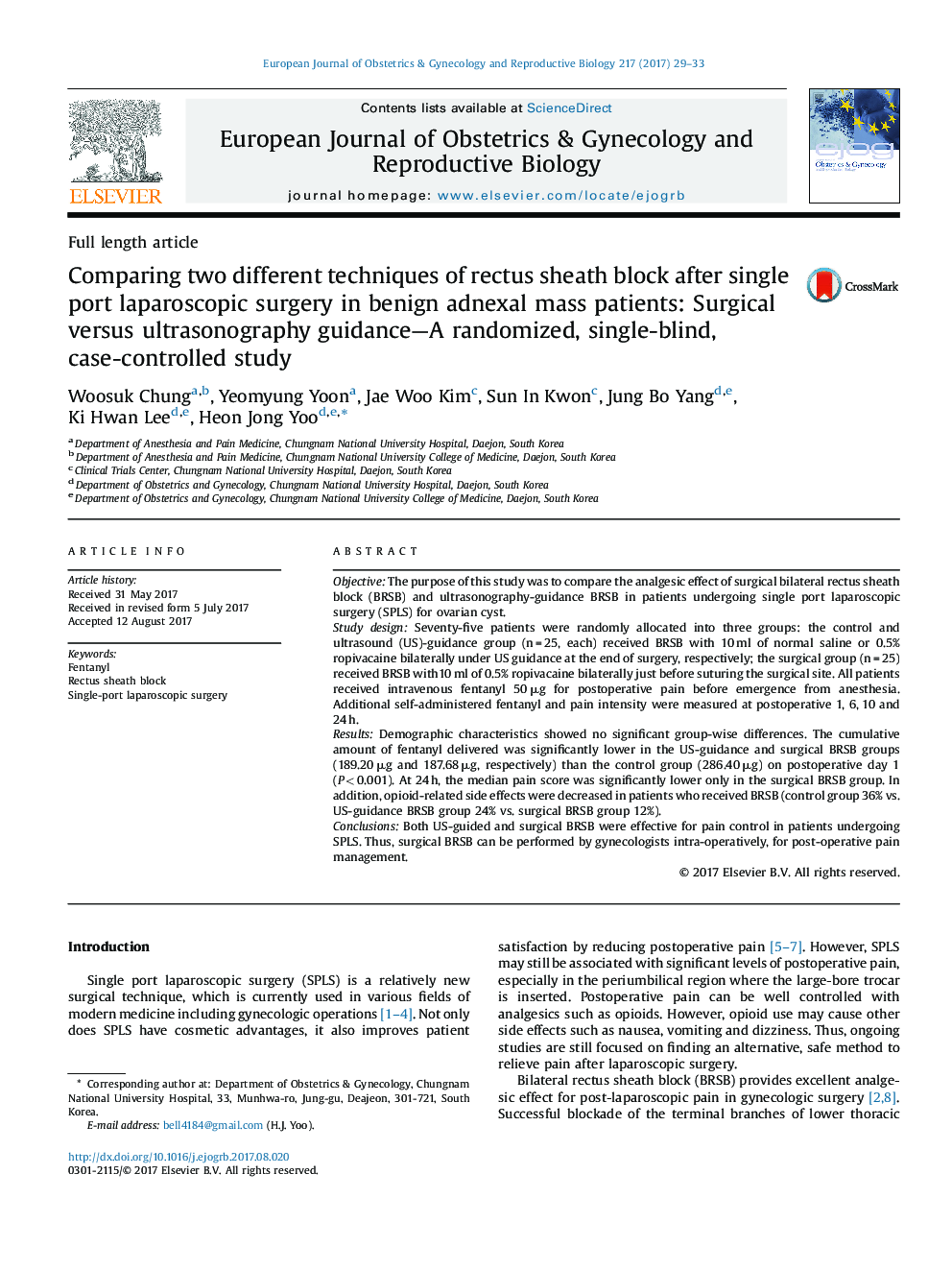| Article ID | Journal | Published Year | Pages | File Type |
|---|---|---|---|---|
| 5691485 | European Journal of Obstetrics & Gynecology and Reproductive Biology | 2017 | 5 Pages |
ObjectiveThe purpose of this study was to compare the analgesic effect of surgical bilateral rectus sheath block (BRSB) and ultrasonography-guidance BRSB in patients undergoing single port laparoscopic surgery (SPLS) for ovarian cyst.Study designSeventy-five patients were randomly allocated into three groups: the control and ultrasound (US)-guidance group (n = 25, each) received BRSB with 10 ml of normal saline or 0.5% ropivacaine bilaterally under US guidance at the end of surgery, respectively; the surgical group (n = 25) received BRSB with10 ml of 0.5% ropivacaine bilaterally just before suturing the surgical site. All patients received intravenous fentanyl 50 μg for postoperative pain before emergence from anesthesia. Additional self-administered fentanyl and pain intensity were measured at postoperative 1, 6, 10 and 24 h.ResultsDemographic characteristics showed no significant group-wise differences. The cumulative amount of fentanyl delivered was significantly lower in the US-guidance and surgical BRSB groups (189.20 μg and 187.68 μg, respectively) than the control group (286.40 μg) on postoperative day 1 (P < 0.001). At 24 h, the median pain score was significantly lower only in the surgical BRSB group. In addition, opioid-related side effects were decreased in patients who received BRSB (control group 36% vs. US-guidance BRSB group 24% vs. surgical BRSB group 12%).ConclusionsBoth US-guided and surgical BRSB were effective for pain control in patients undergoing SPLS. Thus, surgical BRSB can be performed by gynecologists intra-operatively, for post-operative pain management.
